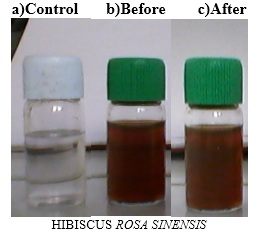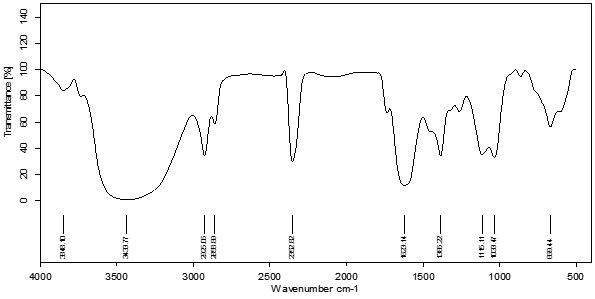"International Journal of Herbal Medicine"
Volume 1, Issue 2
Silver Nano Scaffold Formation by Flowers of Hibiscus Rosa Sinensis
Author(s): S.Shabana 1, M. Syed Muzammil 2*, S.Parsana 3
1. Assistant Professor, PG & Research Department of Mathematics, Marudhar Kesari Jain College for Women, Vaniyambadi, Tamilnadu, India.
2. PG & Research Department of Biochemistry, Islamiah College (Autonomous) Vaniyambadi, Tamilnadu, India.
3. PG & Research Department of Biochemistry, Marudhar Kesari Jain College for Women Vaniyambadi, Tamilnadu, India.
Abstract: Hibiscusrosa sinensis grows for their showy flowers and are used as landscape shrubs. Hibiscusrosa sinensis also has too many medicinal properties. Flowers are rich in polyphenols, flavonoids and anthocyanins. Inourstudy the flower extracts of Hibiscus rosa sinensis has been used for the synthesis of silver nano scaffold formation and its reduction by the flowers. The synthesis of silver nanoparticles occurred under the exposure of the flower extract to 1mM (AgNO3), Silver nitrate aqueous solution. During this process the complete reduction of nanoparticles was observed nearly 48hours of reaction at 30°C under vigorous shaking conditions. The colour change is noted in the reaction mixture and observed during the process of incubation period, it may be due to the formation of the silver nanoparticles which are able to produce the colour in the reaction mixture may be due to their specific properties of surface Plasmon resonance. The colour change was made confirmed by visualization and the characterization by FT-IR, UV-Visible Spectroscopy. Thus we conclude that the reduction process and capping may be having occurred due to the presence of many flavonoids, terpenoids, anthocyanins, some aminoacids and proteins. In conclusion, Hibiscus rosa sinensis flower extract appears capable of forming silver nanoparticles. It can be concluded that, Hibiscus rosa sinensis flower extract was able to form the silver nano scaffold and may be probably due to its antioxidants potential, some flavonoids, terpenes etc. This study is a preliminary effort and requires further investigation at different levels.

Fig 1: Biosynthesis of Silver Nanoscaffold using Hibiscus rosa sinensis Flower Extract.
(a) 1M AgNO3 (b) Initial point (c) Final point of time.

Graph 1: UV-Vis Spectroscopy analysis
Download Full Article : Click Here